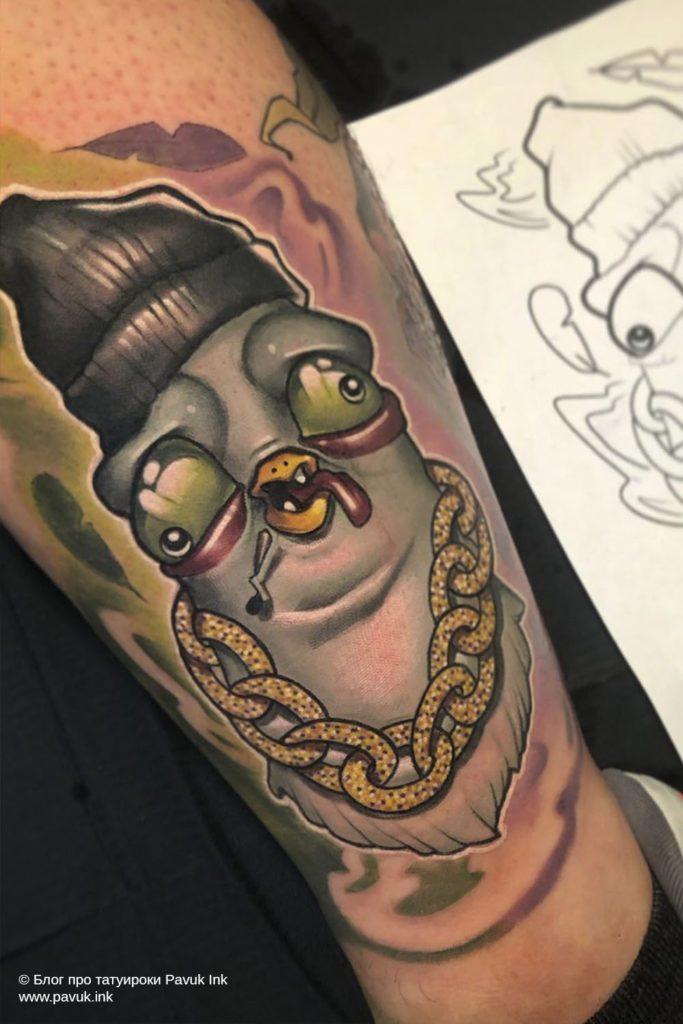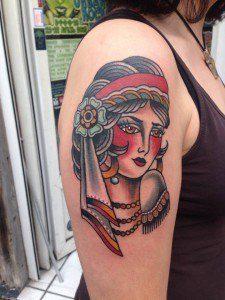
Old school, new school and unconventional tattoos.
When someone defines an artist's style, it is not always obvious to beginners that they know what they are talking about. Some of the styles are pretty close to each other. Therefore, I decide to come to your rescue by explaining to you in general terms the common points and differences between the old school, neo-tride and new school, so that you can prove yourself in society.
In terms of general features, what amazes me the most is the use of color. In these three styles, color and almost always diverge, even if one could find two or three counterexamples. Each style uses it differently: The new school prioritizes "bright" colors of all colors and gradients, while the old school, in contrast, uses more reds and yellows in the dominant colors. And uses them more. in solid color than gradient. In Le Neo-trad we move a little between them, the artist sometimes uses flat colors for floral elements, for example, but does not hesitate to use color gradients in more pastel colors for faces.
Another common point is the use of outlines and lines that are an integral part of patterns, especially in Old School where they are thicker. It is also common in these styles to do a session for lines only and another for colors. I recommend that you attach great importance to the quality of your tattoo artist's lines if you want your artwork to be done in one of these styles. They should be even in thickness and neat.
Within the radius of differences, the most important thing came up - the reasons and themes. Among the three styles that stand out most from the rest, New School stands out. He often refers to cartoons, comics, or even the computer universe. The characters are often sassy, with big eyes, and the artist also uses animals as the main characters in his compositions. The Old School tattoo artist uses certain patterns repeatedly, such as roses, pin-ups, anchors, patterns associated with the navy, swallows, boxers or other gypsies. The artist Neo-trad re-uses some of the old school elements such as the gypsies, but interprets them in a different way, more “thoughtful”, more detailed, more complex and gradational, as explained earlier.
But since photography is better than 1000 words, here are some examples with pictures to help you navigate. I start off with one of my favorite No Trades artists, Mr. Justin Hartman.

You can see here that the rendering of a woman's face is semi-realistic, especially when working with shading, hair is treated with lines, as is often the case in neo-traditional tattoo style.

Here, as stated earlier, the use of color has not been retained by the artist, but the neo-traditional style is always evident in this combination between semi-realistic elements and elements processed in a more traditional way, here in the presence of colors.
I follow an old school tattoo signed by Greg Bricaud, one of the benchmarks of this style in France.

It is clearly seen here that the lines are more advanced forward, more noticeable in the composition. Moreover, the motive no longer strives for realism, quite the opposite. Much less gradient in colors.
I end up with Victor Chil, one of the world leaders in new school tattoos.

Here the difference with the other two styles is obvious, we can feel that the artist's universe is crazy. However, we always find the use of lines, even if they are more discreet, otherwise it has nothing to do with neo and old school. The work of color is brought to its climax here, it is flashy, it is magnificently degraded, the essence of the tattoo finds its soul in this work of paint.
In conclusion, I will tell you that here I am only giving you the codes for each style and in general terms. In each of these categories one could find artists with very different creations, so my words should not be taken as the words of the Gospels, but they will still allow you to better understand each style in most cases, at least me. 'hope 😉
Quentin d'Incaj
Leave a Reply